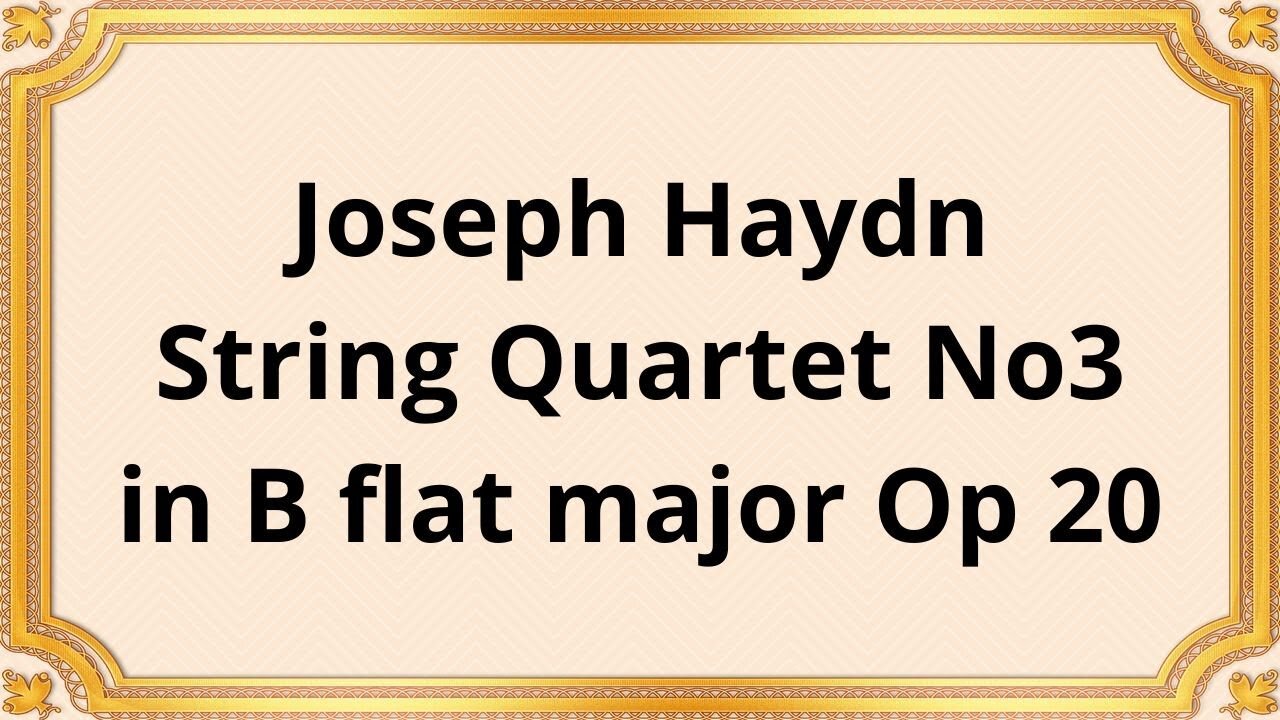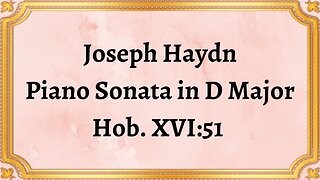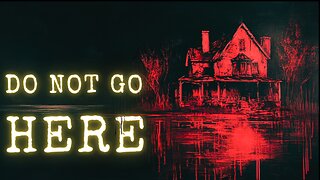Premium Only Content

Joseph Haydn String Quartet No3 in B flat major Op 20
#ClassicalMusic #JosephHaydn #StringQuartet #BFlatMajor
#Opus20 #MusicComposition #HaydnQuartet #MusicHistory #MusicAppreciation #ClassicalComposers
JOSEPH HAYDN COMPLETE STRING QUARTETS OF OP20
"The Sun Quartets"
Publication date 1952
SCHNEIDER QUARTET
Alexander Schneider, First Violin
Isidore Cohen, Second Violin
Karen Tuttle, viola
Madeline Foley, violoncello
The world of classical music is filled with a plethora of captivating compositions that have stood the test of time. Among these timeless works is the renowned "Joseph Haydn String Quartet No. 3 in B flat major, Op. 20."
Composed in 1772, Joseph Haydn's String Quartet No. 3 in B flat major, Op. 20 is part of a collection of six string quartets known as "Sun Quartets." These quartets marked a turning point in Haydn's compositional style, showcasing his growing maturity and experimentation with form and structure. Considered some of the most significant works of the classical period, they were dedicated to Haydn's patron, Prince Nikolaus Esterházy.
Haydn's String Quartet No. 3 in B flat major is a four-movement piece that exhibits the composer's mastery of the string quartet genre. The first movement, marked Allegro moderato, begins with a lively and energetic theme introduced by the first violin. The movement unfolds with intricate counterpoint and harmonic progression, showcasing Haydn's ability to create a rich and varied musical landscape.
The second movement, marked Menuetto, presents a contrasting mood with its elegant and graceful dance-like character. This movement features a delightful interplay between the four instruments, with moments of unity and moments of dialogue. Haydn's use of syncopation and dynamic contrasts adds depth and charm to the piece.
The third movement, marked Affettuoso e sostenuto, is a deeply expressive adagio that showcases Haydn's gift for writing heartfelt melodies. This movement is characterized by its lyrical and introspective nature, inviting the listener into a world of profound emotion.
The final movement, marked Finale: Presto, brings the quartet to a lively and spirited conclusion. It is a tour de force of technical brilliance, featuring rapid passages, intricate rhythms, and vibrant interplay between the instruments. Haydn's ability to combine virtuosity with musicality is on full display in this exhilarating finale.
"Joseph Haydn String Quartet No. 3 in B flat major, Op. 20" holds a significant place in the development of the string quartet genre. Haydn's innovative approach to form, his exploration of the expressive capabilities of the instruments, and his superb craftsmanship paved the way for future composers. This quartet, along with the rest of the "Sun Quartets," served as a blueprint for later composers such as Mozart and Beethoven, who further expanded the possibilities of the string quartet medium.
Conclusion:
In conclusion, "Joseph Haydn String Quartet No. 3 in B flat major, Op. 20" is a remarkable composition that exemplifies Haydn's genius as a composer. Its historical significance, musical characteristics, and lasting impact make it a true masterpiece of the classical music repertoire. This quartet continues to captivate audiences and inspire musicians, reminding us of the enduring power of Haydn's music and his immense contribution to the world of classical music.
You have the opportunity to support the channel:
https://destream.net/live/RadSiarAl/donate
https://www.buymeacoffee.com/6355radsiaral
-
 6:07
6:07
Classical music_Music Inspiration
6 days agoJoseph Haydn Piano Sonata in D Major, Hob. XVI:51
341 -
 2:11:11
2:11:11
TheSaltyCracker
2 hours agoTrump Fires Everyone ReeEEeE Stream 01-31-25
56K125 -
 1:15:45
1:15:45
Roseanne Barr
4 hours ago $12.29 earnedJFK case solved!? with Shane Stevens | The Roseanne Barr Podcast #85
31.6K12 -
 LIVE
LIVE
Dr Disrespect
10 hours ago🔴LIVE - DR DISRESPECT - PUBG - WHAT WINNING LOOKS LIKE
3,542 watching -
 4:41:07
4:41:07
Nerdrotic
6 hours ago $24.31 earnedCap 4 and Emelia Perez BACKLASH! Acolyte is Still CANCELED! Hollywood STFU | Friday Night Tights 339
153K19 -
 57:41
57:41
The StoneZONE with Roger Stone
3 hours agoWhy Are They So Afraid of Tulsi Gabbard? | The StoneZONE w/ Roger Stone
20.7K5 -
 LIVE
LIVE
I_Came_With_Fire_Podcast
8 hours ago🔥🔥Suing CHINA, Hillary AIDED RUSSIA, and DEI REMOVED from Military🔥🔥
298 watching -
 LIVE
LIVE
SoniCentric
9 hours agoCozy Up With SNOWY Lakeside Cabin Jazz Vibes
81 watching -
 1:36:16
1:36:16
PMG
23 hours ago $0.06 earnedSPECIAL: JUSTICE FOR JEREMY - NOW!
582 -
 1:01:01
1:01:01
TheTapeLibrary
11 hours ago $1.03 earnedThe Horrifying True Story of Summerwind Mansion
9.57K2